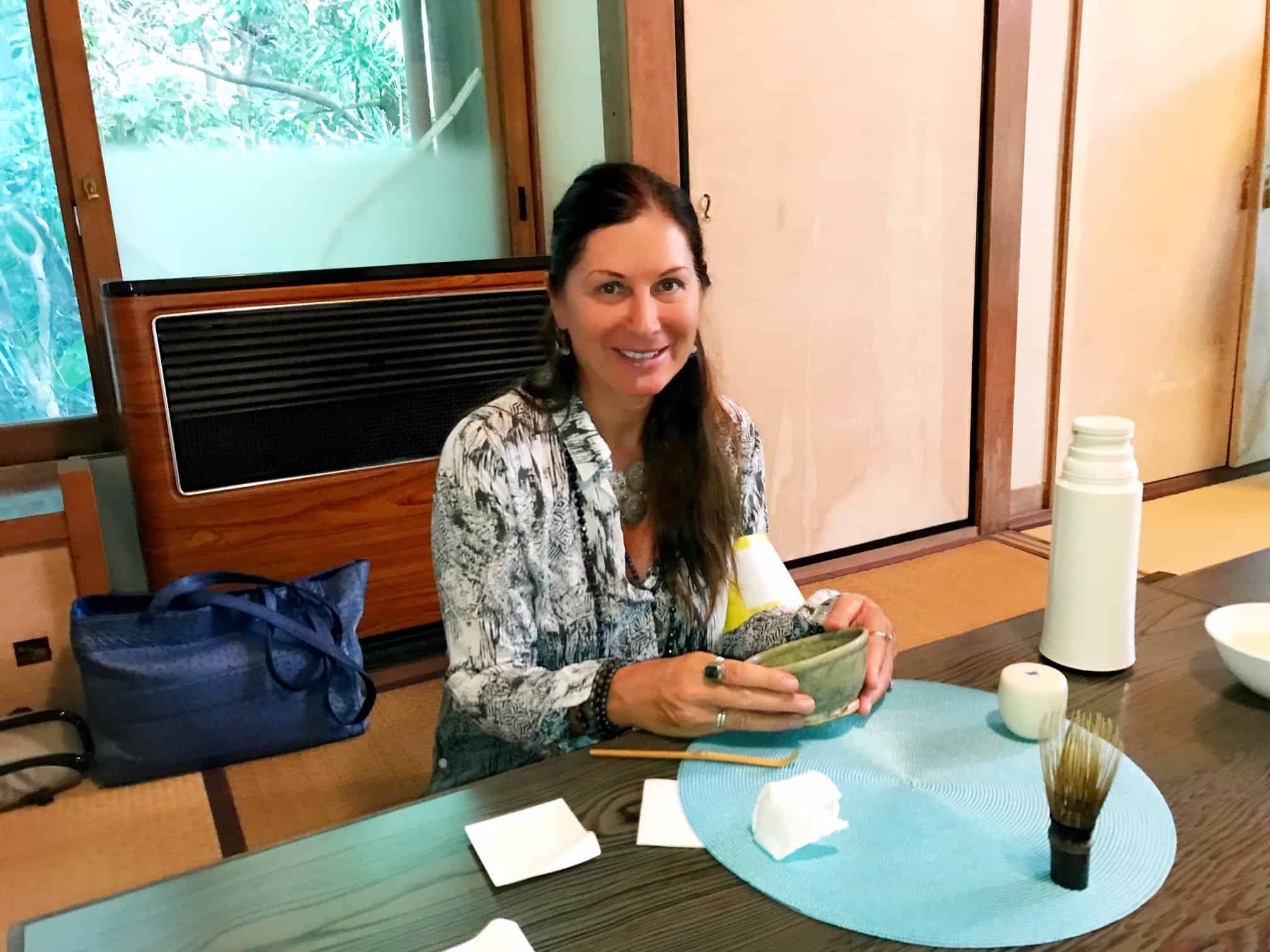We had a unique opportunity to experience consciousness and fully being present during an official tea ceremony at Zen 2.0 in Japan this September.
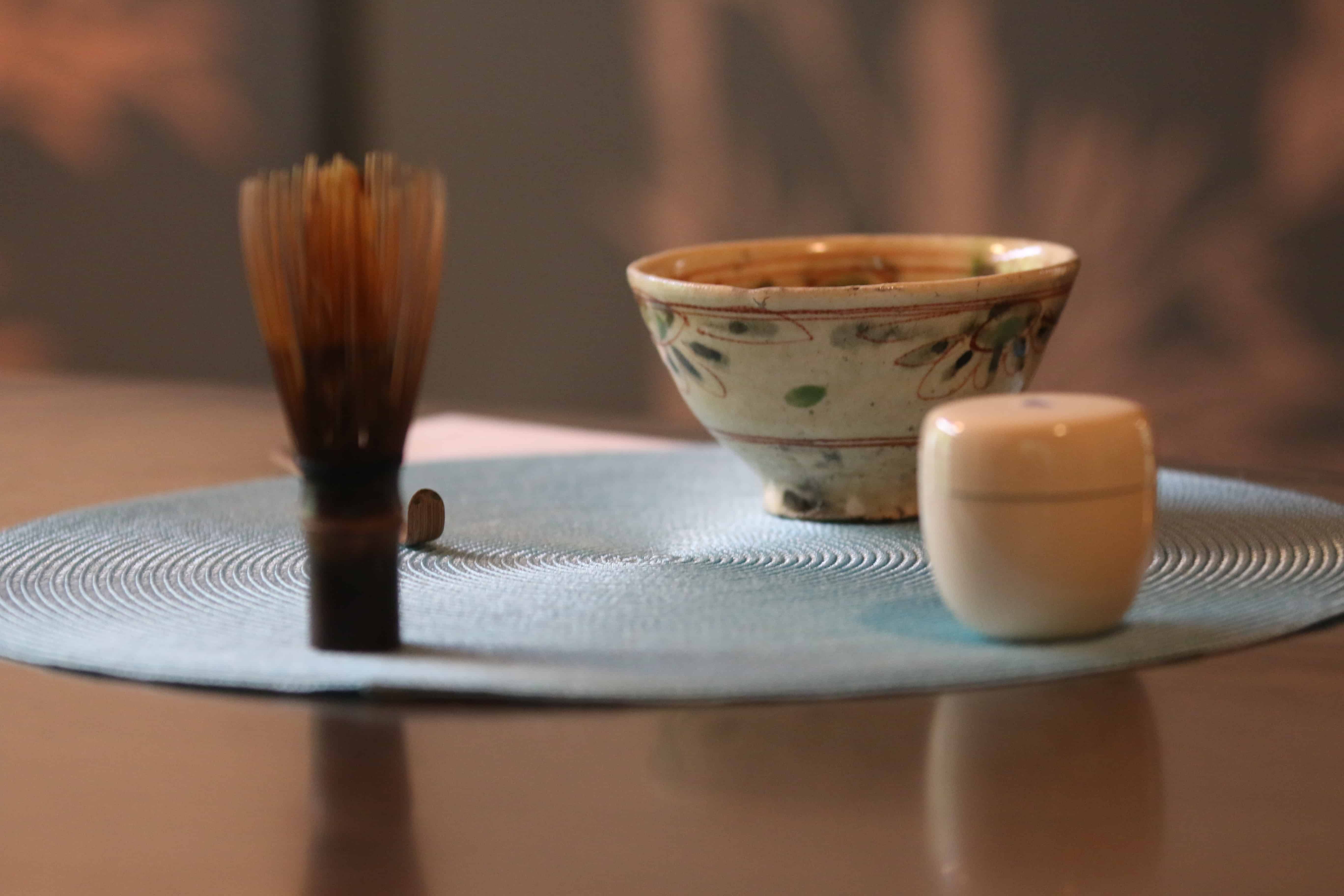
A traditional tea ceremony in Japan can be transformative
The Power of a Tea Ceremony to Connect
Tea master Kyoko “Myokyo” Denda taught us why different gestures and steps are done in the way they are done at a traditional tea ceremony.
Known nationally as a Mushakouji-senke tea master, she explained how one partakes matcha tea in a way to understand the essence of nature and being present, in order to awaken one’s consciousness to higher levels. Matcha tea of course has a number of health benefits as well.
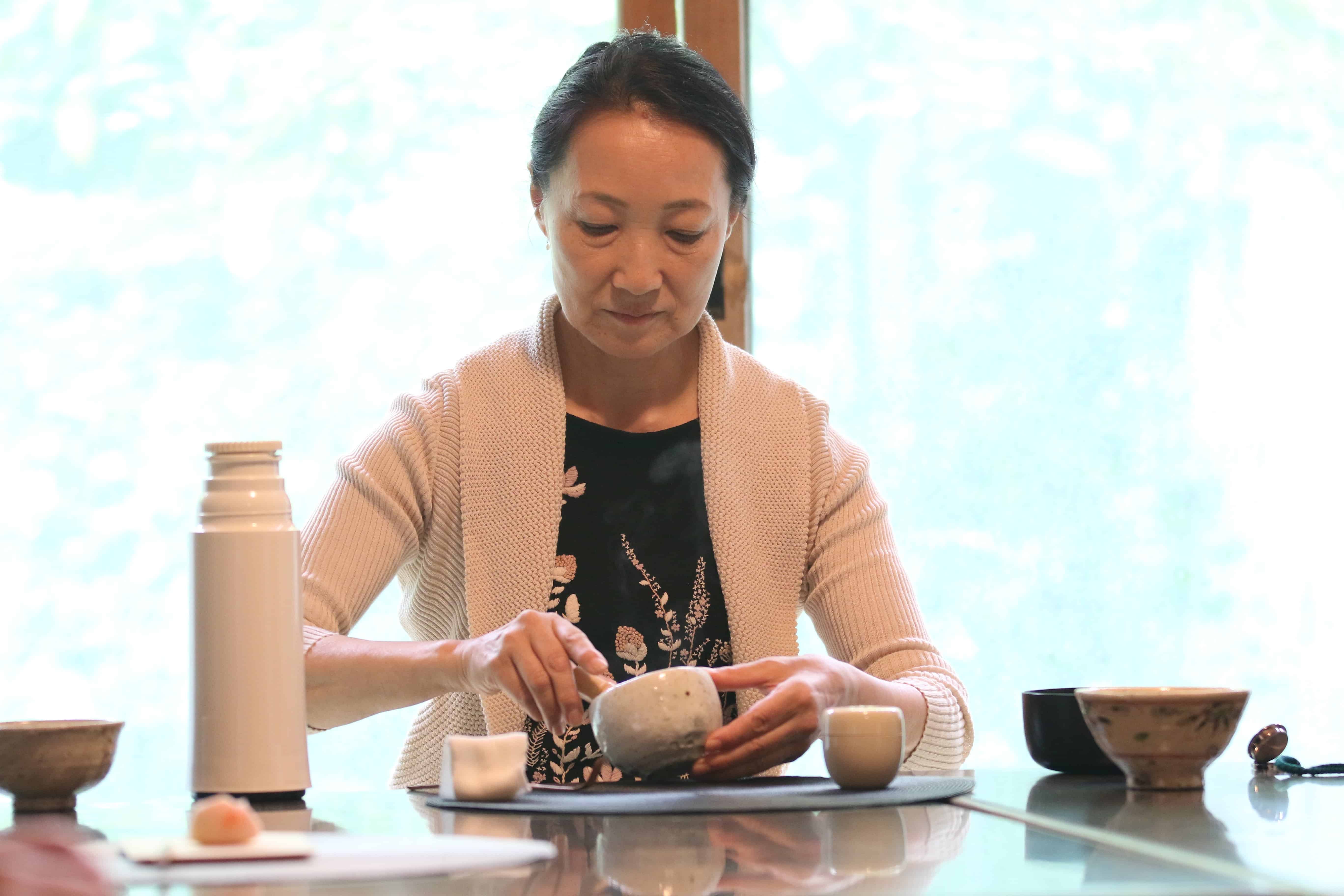
Denda teaching a workshop about the etiquette of a tea ceremony
During a traditional tea ceremony, we learn that there’s a certain placement of the bowl, the whisk and the wooden spoon and they all have a purpose of being in a particular place at any given time. There’s a flow when it comes to making matcha tea in a mindful way.
As an avid tea drinker, I would mesmerized by her motions and how particular she was every step of the way. For example, the ceramic holder that contains the tea sits at 9 pm and the whisk is at 12 pm, whereas the bowl is right in the center. Your napkin goes at 3 pm and the wooden spoon is at 4:30 pm.
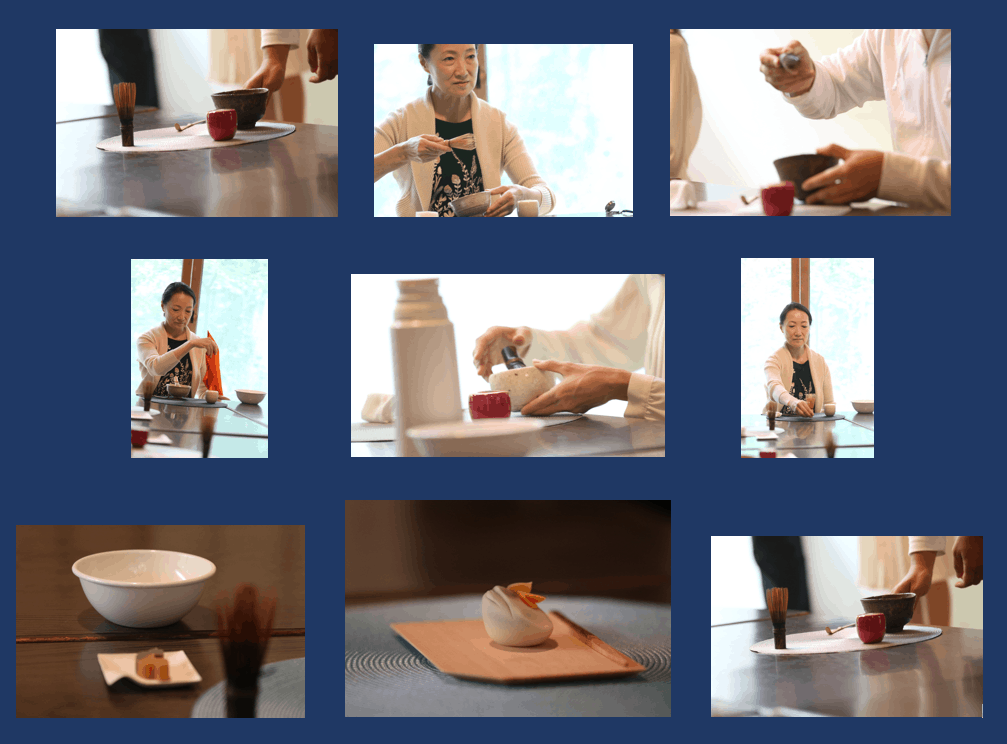
The various steps of a tea ceremony all have an intention.
Steps of a Tea Ceremony
Notice how upright she is sitting when she whisks — it’s important that your back is straight and you are facing the bowl straight on, not at an angle. She says, “be aware of the axis of how you sit. The space before you is like a stage you are creating.
At a more formal tea ceremony in Japan, step one is cleaning the tea (you use a thermos of hot water for this process). Step two is whisking — my translator tells me that it is the left hand which takes the whisk. (Note that I was the only non-Japanese attendee at the workshop). The whisking process is an art — it’s important that the bubbles and froth are ‘just right.’
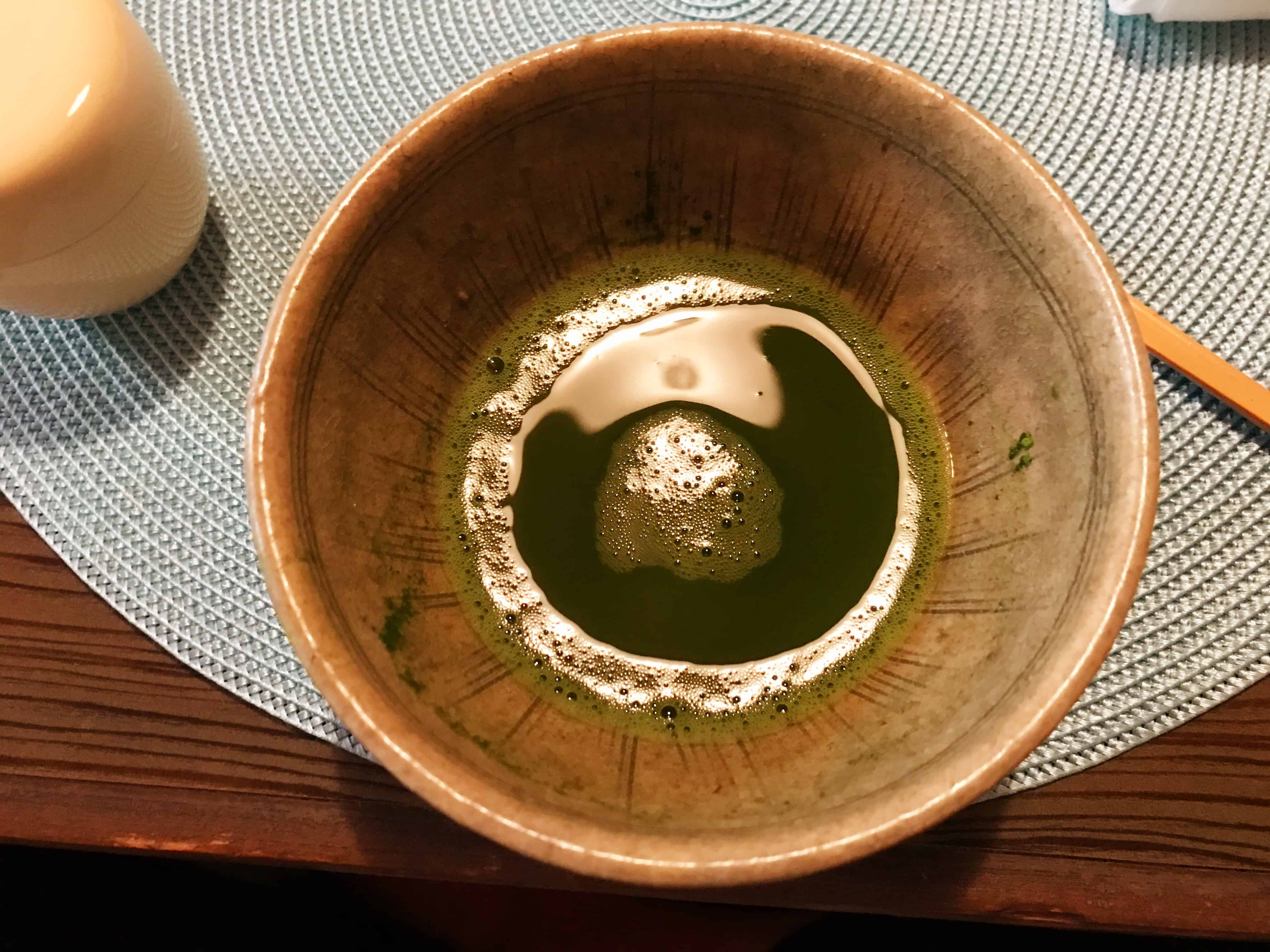
Tea Ceremony Workshop: Whisking the tea
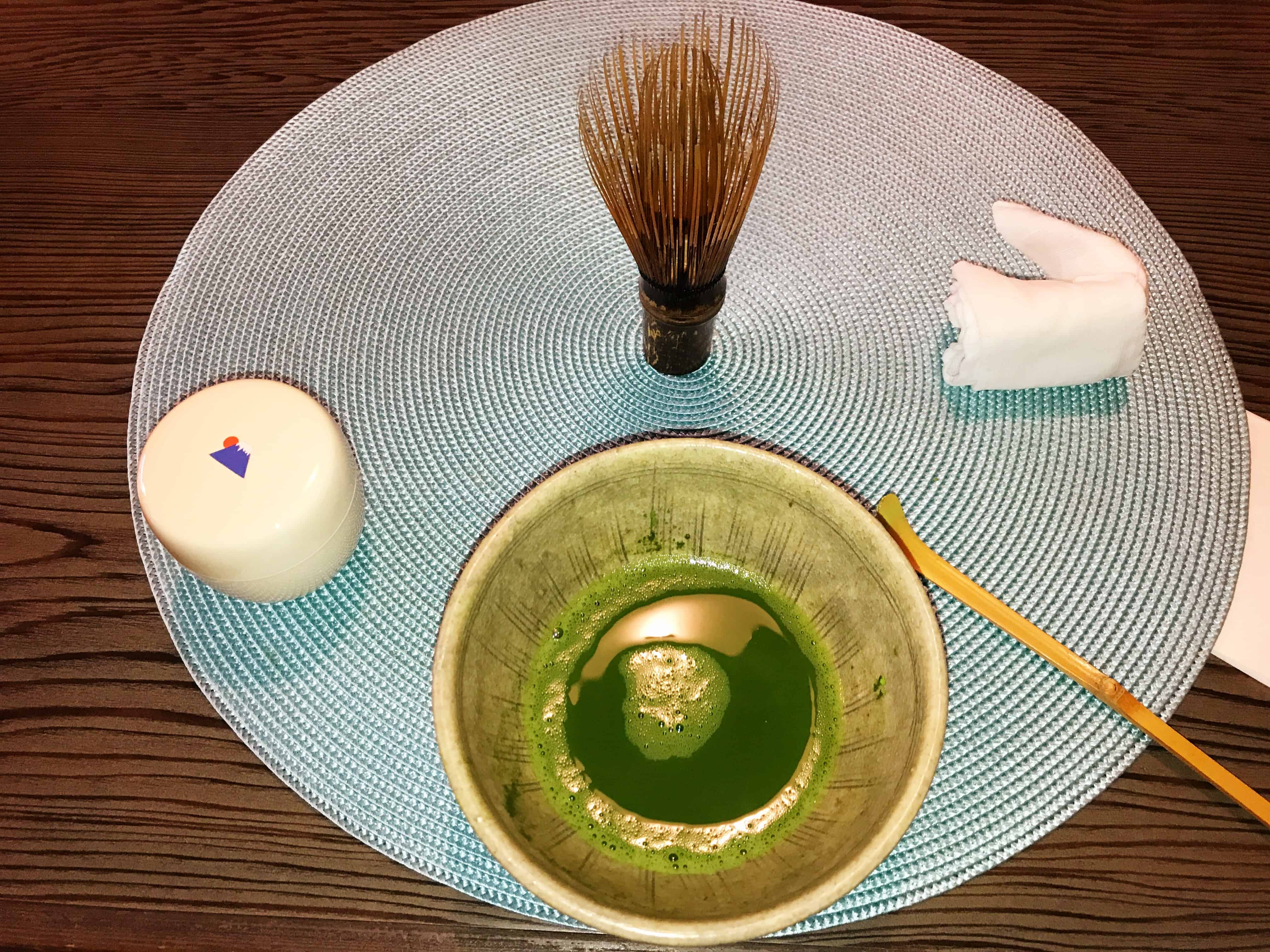
After we cleaned our tea, we all bowed down to our bowl and utensils. Notice this process alone is teaching you the art of being present, the art of gratitude and the art of realizing that everything is interconnected in life, including the tea that you create and ultimately drink.
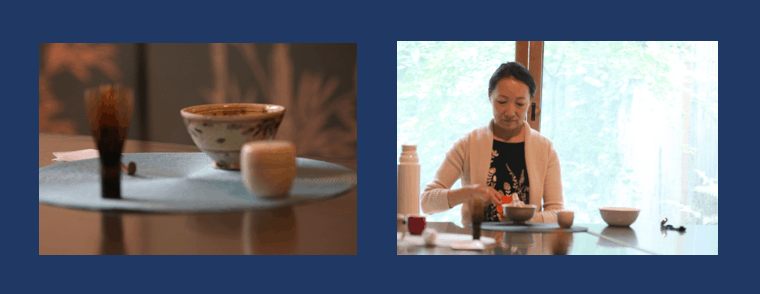
Tea ceremony process
In the tea ceremony preparation process, she teaches us, you’ll learn that there is intention behind everything, a bit like how life ‘should be.’ So often, we are running around like hampsters in a wheel and not being intentional about what we want in our lives and how we wish to live.
Intention even goes into how perfectly paired the desserts are that you choose to eat with your tea. Note how that I purposely added the word “choose.” So often, we don’t choose things in our lives, we react to them.
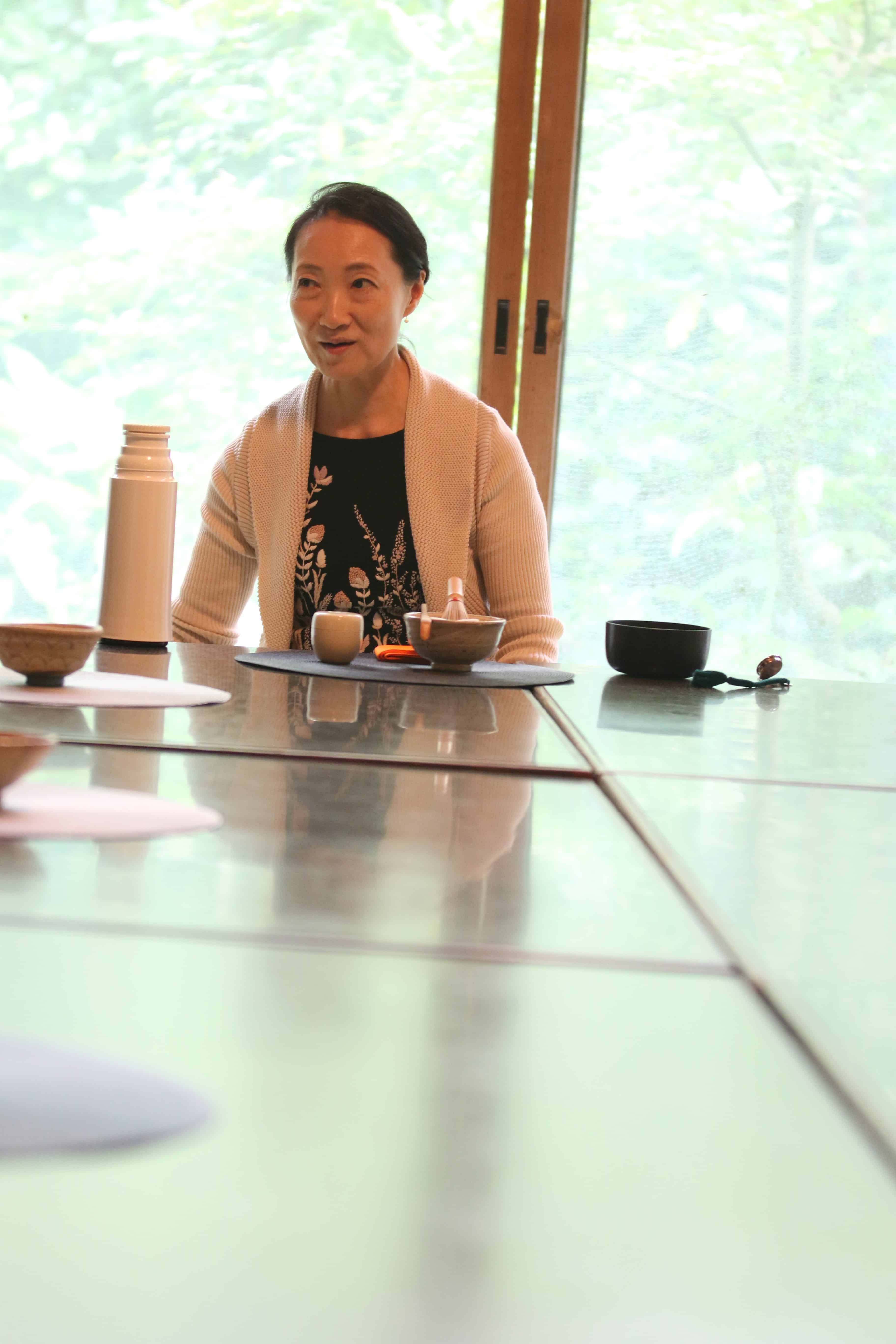
She asks us to notice the colors — in this particular ceremony, there were many greens and browns in the sweets and this is because we were honoring the Autumn season. Tea in one region however will be different than another region as will the sweets — the tea, ceremic bowls and cups will change depending on the season.
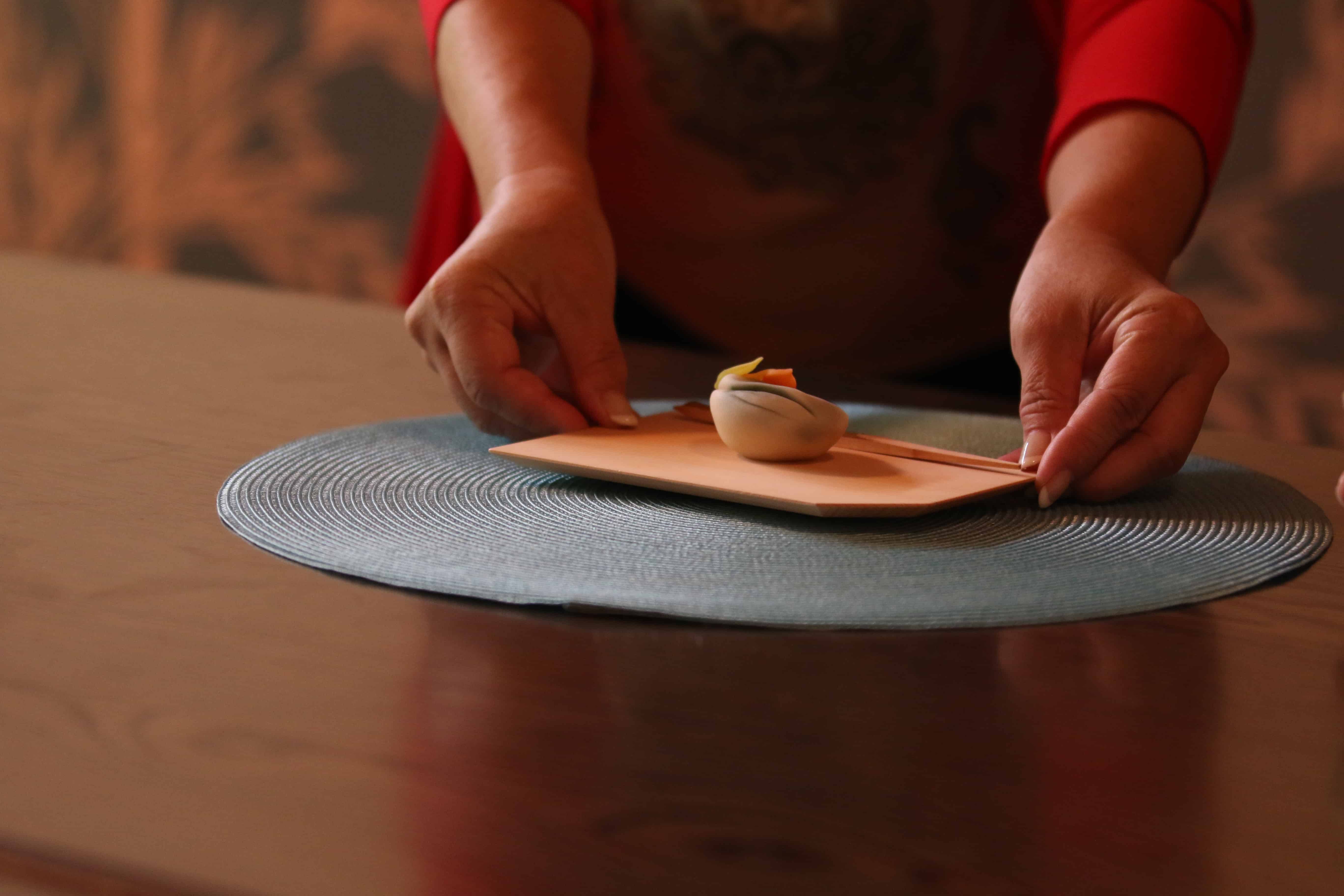

Sweets are also very intentional at a Japanese tea ceremony
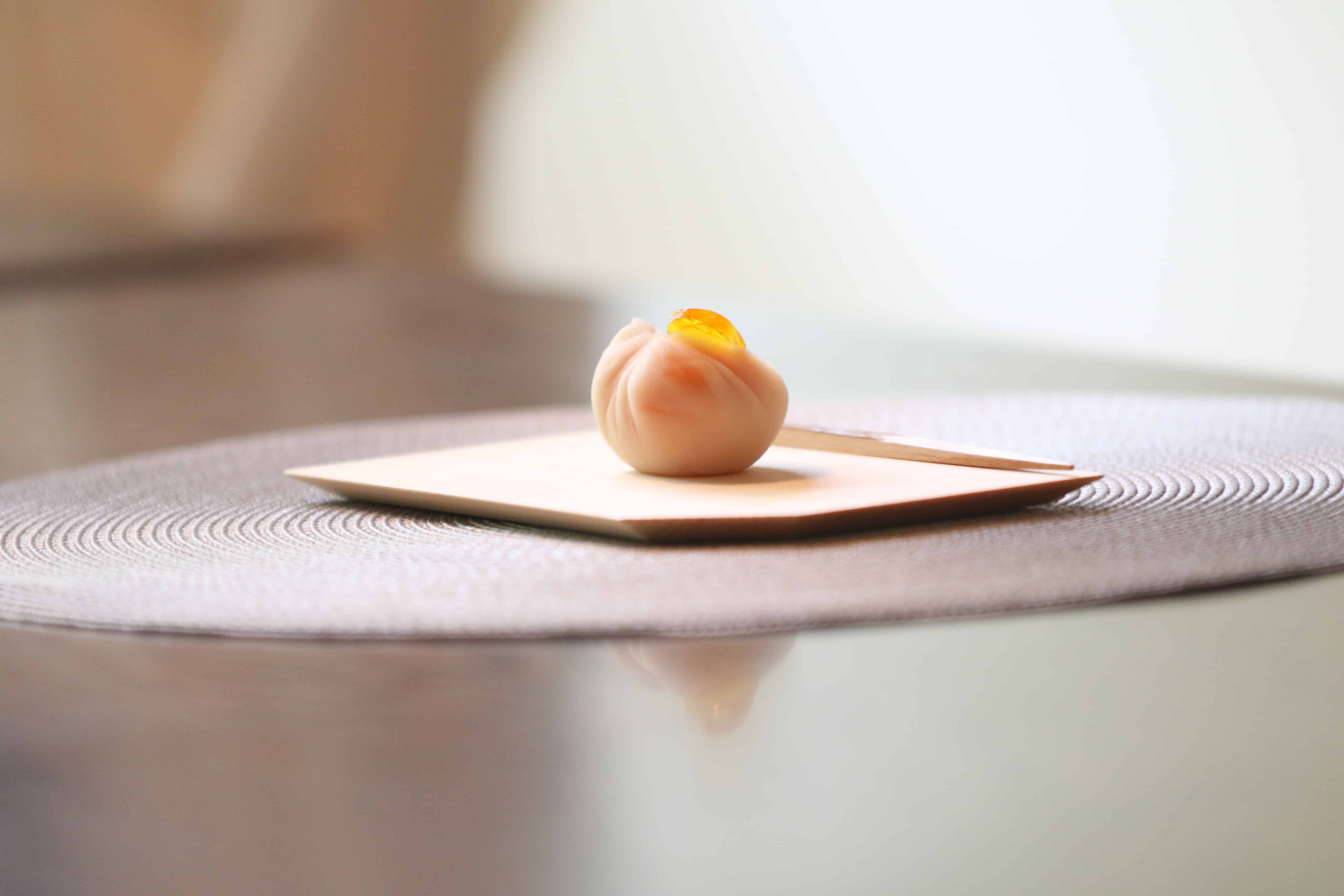
The tea cups you select are very purposeful as well, which is done at the very beginning. She also carefully cleaned each tea cup before we got started. Even how you hold the tea cup and the whisk seems to matter.
For example, she would put her left hand under the bottom and the right hand would carefully go around the cup for support. The bowls are chosen by season as well. With every selection, there is an intention.
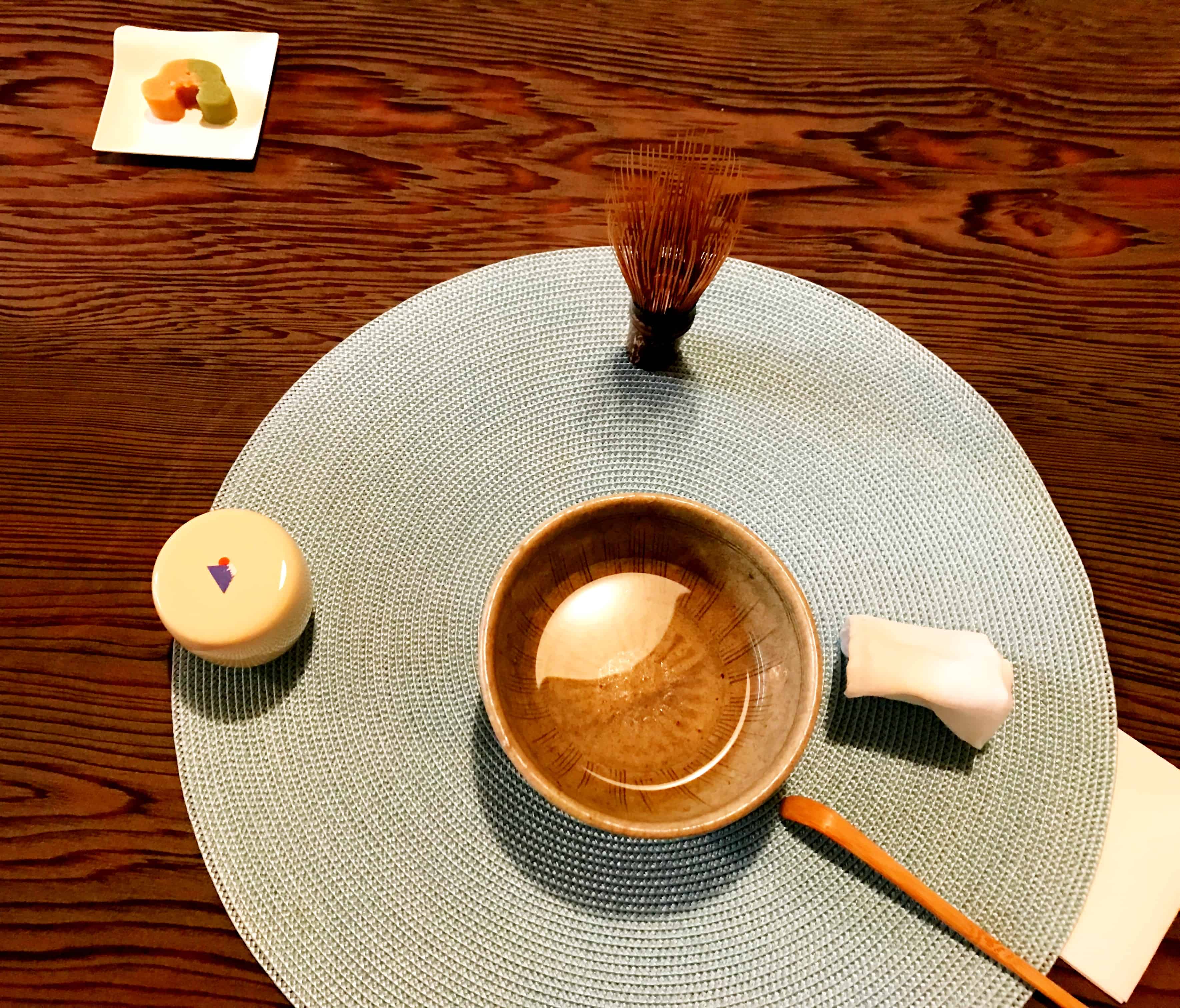
Even though we were learning the tea ceremony process on a wooden table, she says that there are even more intricate details when you are taught more formerly. While it likely makes logical sense that you would choose certain tea cups, type of tea and desserts, you might not think about the type of mat for example.
She usually makes and has tea on a mat and it is usually in a much smaller room than the large room where the workshop was taught. The entrance is often very low to enter the room — the idea behind this is to humble (and lower) yourself, so that you‘re reminded to be humble and get your ego out of the way.
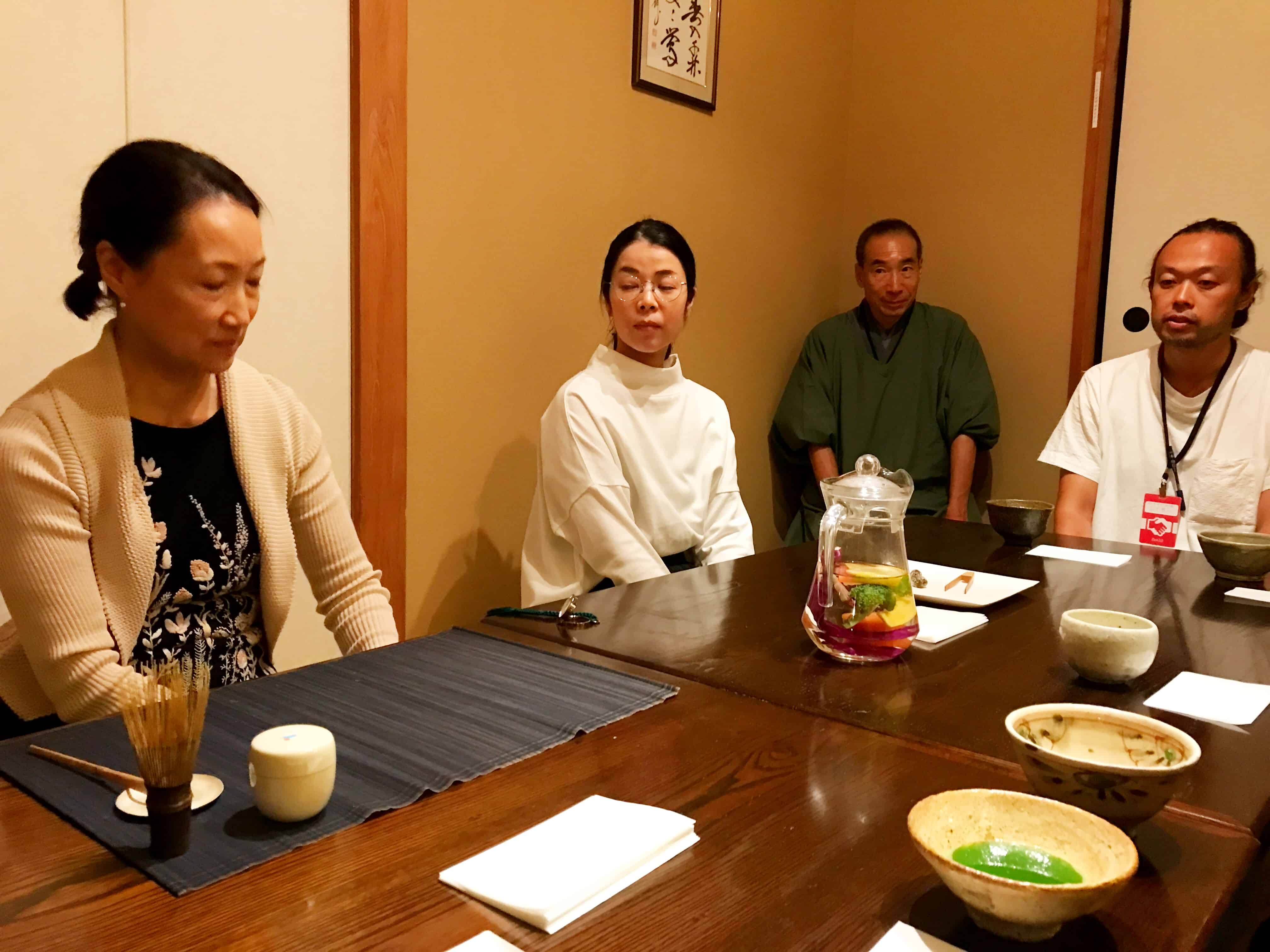
“Paying attention to every aspect & element of nature, slowly we purposely open ourselves up to a higher consciousness.”
Celebrating my tea creation at the end of the tea ceremony workshop
Later in the Zen 2.0 Conference, we had an opportunity to experience a tea ceremony with Denda in a more traditional setting and did indeed have to bow down to enter the small room.
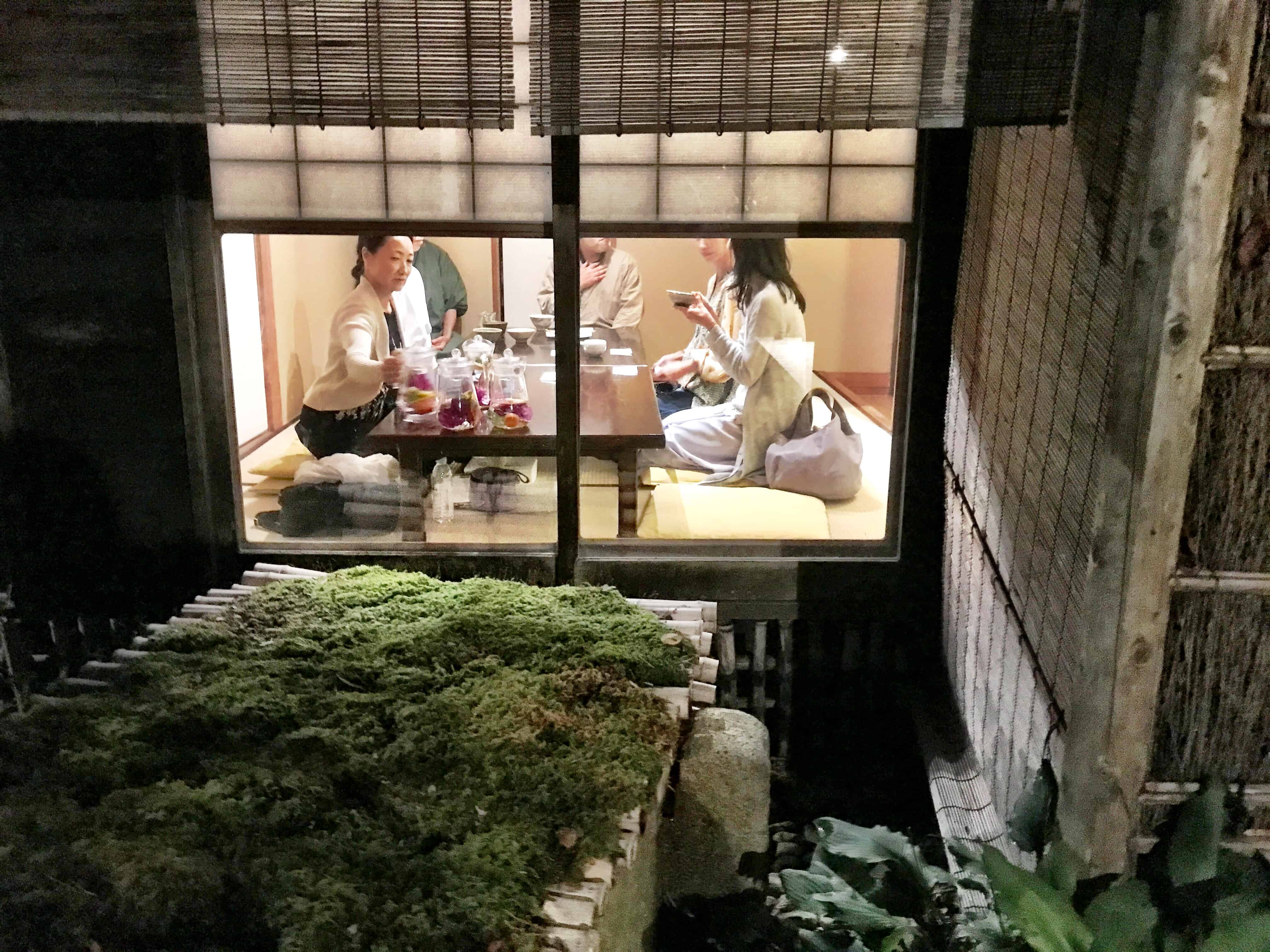
She says, “we pay attention to every aspect and element of nature, slowly and with intent, and when we do so and are aware of this, even for something as simple as drinking tea, we are purposely opening ourselves up to a higher consciousness.”
In this way, we can also become more connected….to ourselves and to others.
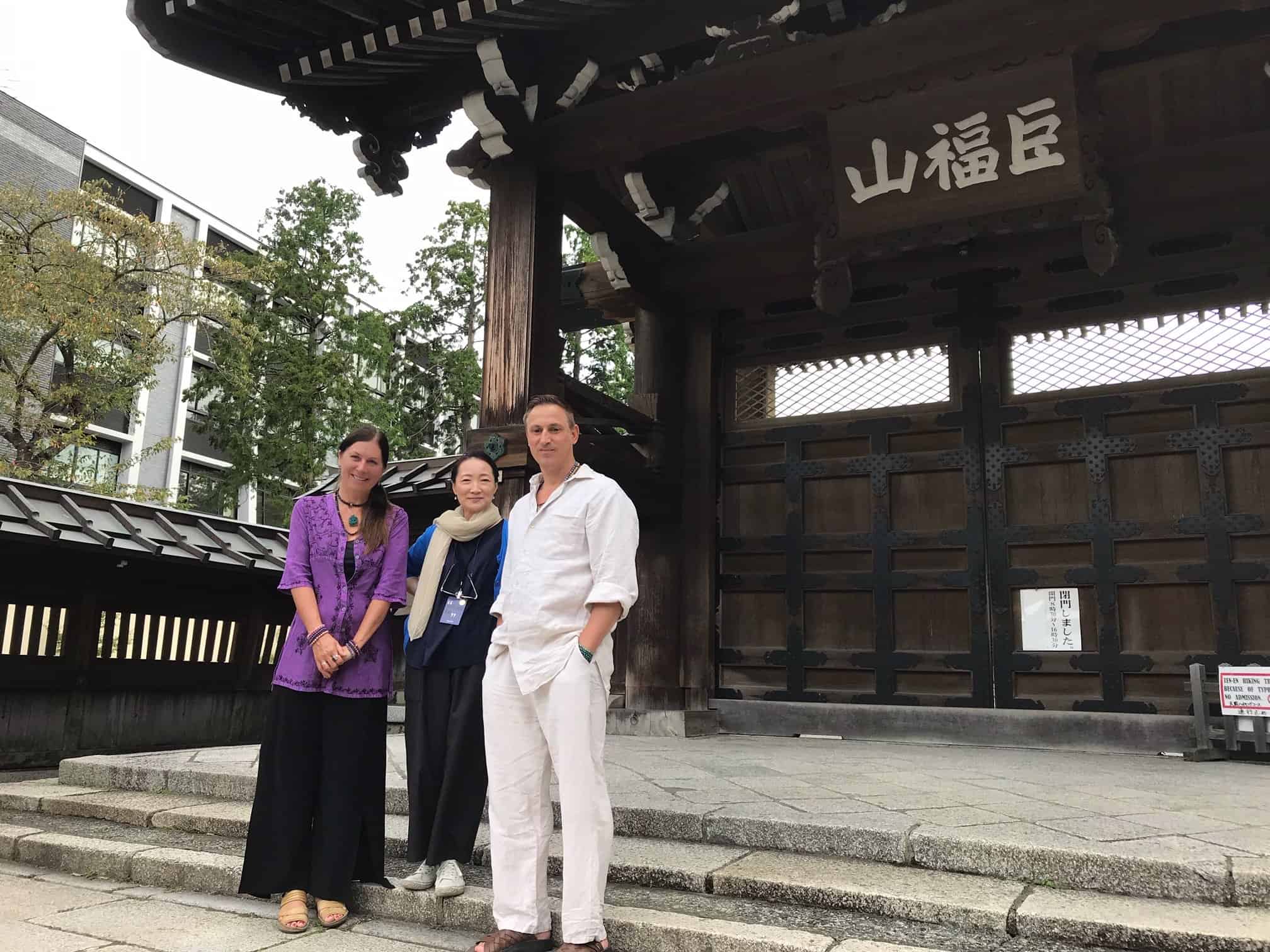
Together with tea master Myokyo Denda in front of one of the temple buildings on the last day of the conference. We love her energy and wished we had more time to learn from her.

Renee Blodgett is the founder of We Blog the World. The site combines the magic of an online culture and travel magazine with a global blog network and has contributors from every continent in the world. Having lived in 10 countries and explored over 90, she is an avid traveler, and a lover, observer and participant in cultural diversity. She is also the founder of the Magdalene Collection, a jewelry line dedicated to women’s unsung voices and stories, and the award-winning author of the bestselling book Magdalene’s Journey
She is founder of Blue Soul Media and co-founder of Blue Soul Earth as well as the producer and host of the award-winning Blue Soul CHATS podcast, that bridges science, technology and spirituality. Renee also founded Magic Sauce Media, a new media services consultancy focused on viral marketing, social media, branding, events and PR. For over 20 years, she has helped companies from 12 countries get traction in the market. Known for her global and organic approach to product and corporate launches, Renee practices what she pitches and as an active user of social media, she helps clients navigate digital waters from around the world. Renee has been blogging for over 16 years and regularly writes on her personal blog Down the Avenue, Huffington Post, BlogHer, We Blog the World and other sites. She was ranked #12 Social Media Influencer by Forbes Magazine and is listed as a new media influencer and game changer on various sites and books on the new media revolution. In 2013, she was listed as the 6th most influential woman in social media by Forbes Magazine on a Top 20 List.
Her passion for art, storytelling and photography led to the launch of Magic Sauce Photography, which is a visual extension of her writing, the result of which has led to producing six photo books: Galapagos Islands, London, South Africa, Rome, Urbanization and Ecuador.
Renee is also the co-founder of Traveling Geeks, an initiative that brings entrepreneurs, thought leaders, bloggers, creators, curators and influencers to other countries to share and learn from peers, governments, corporations, and the general public in order to educate, share, evaluate, and promote innovative technologies.

